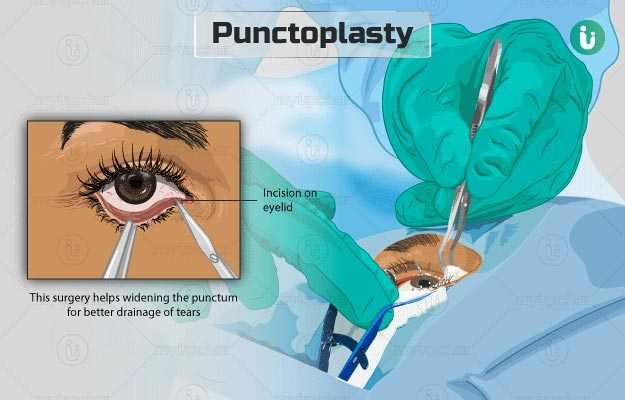Summary
Punctoplasty is a surgical procedure that increases the size of the punctum (tiny hole at the edge of eyelids that drains tears out of the eye) to improve the drainage of tears in people with punctal stenosis (narrowing of the punctum). In punctal stenosis, tears overflow from the eyes to the cheeks. However, this surgery should not be performed if the overflowing of tears is due to some other reasons, such as narrowing of the canaliculus (pathways for drainage of tears from the eyes) or blockage in the nasolacrimal (tear) duct.
Before punctoplasty, the ophthalmologist will take your medical history and perform some tests. You may need to discontinue certain medicines like aspirin. Punctoplasty may be performed by different methods, namely one-snip, two-snip, or three-snip punctoplasty. You will be given local anaesthesia for the punctoplasty, and the doctor may prescribe some medications to lower the pain. You may require antibiotic eye drops to prevent an infection. Your follow-up appointment will be in a few days after the surgery, but if you experience symptoms like nausea, pain, and vomiting, visit or call your doctor immediately.






































